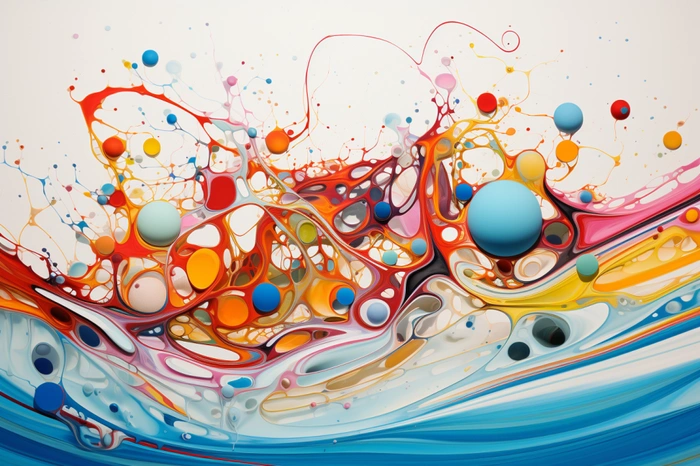Using creative artistic styles for experimentation in an AI art generator like Midjourney can open up a new dimension of visual creativity. The core idea is to leverage the generator’s flexibility to reinterpret styles, subjects, and themes in a way that isn’t necessarily limited by conventional artistic norms.
Creative artistic styles can be anything from Cubism to Surrealism or even something contemporary like Vaporwave. However Thaeyne has once again compiled a great demonstration of how you can use Artist names as style references for the Midjourney generator, instructing it to emulate a particular artist’s style but with a unique twist. Check out the video below to learn more about how they can be used and experimented with in Midjourney 5.2.
100 creative artistic styles for Midjourney
Other articles you may find of interest on the subject of Midjourney 5.2 :
Artemisia Gentileschi
Artemisia Gentileschi was an Italian Baroque painter, known for her dramatic use of light and color. She often focused on biblical and mythological themes, featuring strong female protagonists. Her work is characterized by meticulous attention to detail and a deep understanding of human emotion.
Anders Zorn
Anders Zorn was a Swedish painter best known for his nudes, portraits, and landscapes. His style often employed loose brushwork and a limited palette, capturing the play of light with great skill. Zorn’s etchings and watercolors also gained international acclaim.
Frank Miller
Frank Miller is an American comic book artist and writer, renowned for his dark, gritty style. His work often explores themes of heroism, law, and morality, set against a backdrop of urban decay. Miller’s art is characterized by bold lines, stark contrasts, and innovative panel layouts.
Helen Frankenthaler
An American abstract expressionist painter, Helen Frankenthaler was known for her “soak-stain” technique. She would pour thinned paint onto unprimed canvas, allowing the colors to soak into the fabric. This resulted in luminous, airy compositions that were both planned and spontaneous.
Takashi Murakami
Takashi Murakami is a contemporary Japanese artist who blends traditional Japanese art with pop culture elements. His Superflat style flattens the picture plane and mixes high and low art, often featuring smiling flowers, iconic characters, and other whimsical motifs.
Niki de Saint Phalle
Niki de Saint Phalle was a French-American artist known for her large-scale sculptures and installations. She’s famous for her “Nanas,” brightly colored, voluptuous female figures made from polyester. Her work often engaged with feminist themes and public art.
Edward Bawden
Edward Bawden was an English printmaker, graphic designer, and illustrator. His work spans various techniques including linocuts and engravings, often featuring landscapes, architecture, and whimsical subjects. His style is characterized by clean lines and a playful use of color.
Jean Nouvel
Though primarily an architect, Jean Nouvel’s work is artistic in its use of space, light, and material. He’s known for his modernist designs that respond uniquely to their environment, often incorporating transparent or reflective materials that change appearance depending on the light.
Cerith Wyn Evans
Cerith Wyn Evans is a Welsh conceptual artist, known for his diverse works that include sculpture, film, and installations. He often employs light and text to create works that invite the viewer to question their perceptions and assumptions.
Hannah Höch
Hannah Höch was a German Dada artist best known for her pioneering work in photomontage. Her compositions often included cuttings from fashion magazines, illustrated journals, and such, rearranged to create new, often politically charged meanings.
Combining Styles and Artists
You can take it a step further by combining both artistic styles and artist names in your prompts. A prompt like “Cubism + Van Gogh + starry night” could result in a fragmented, geometric rendition of a starry night with Van Gogh-like color schemes.
Subjects can be as simple as “apple” or as complex as “existential dread.” When combined with styles and artist names, the subject matter can become a playground for creative possibilities. For example, “Surrealism + Dali + clock” could yield a bizarre, dream-like image of a melting clock.
One of the advantages of using an AI art generator is the ease with which you can iterate. Don’t like the first output? Tweak your prompt and try again. The goal is to explore the parameter space creatively, making small adjustments to discover surprising and aesthetically pleasing results.
The Midjourney AI art generator can be a powerful tool for creative experimentation when you utilize a mix of artistic styles, iconic artists, and diverse subjects. The key is to explore and iterate, harnessing the AI’s ability to generate unexpected yet compelling visual narratives.
Filed Under: Guides, Top News
Latest Aboutworldnews Deals
Disclosure: Some of our articles include affiliate links. If you buy something through one of these links, Aboutworldnews may earn an affiliate commission. Learn about our Disclosure Policy.







